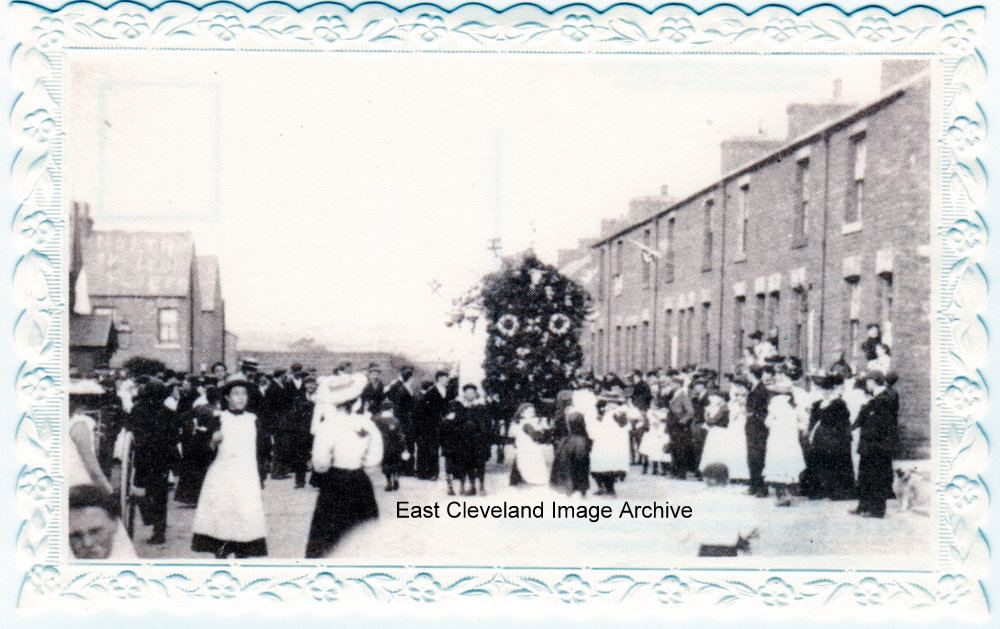
The title of this image sums up all the information we have on this scene. Can somebody out there assist, with why or possibly any of the participants?
Image courtesy of Jeff Templeman.
|
|
||
 The title of this image sums up all the information we have on this scene. Can somebody out there assist, with why or possibly any of the participants? Image courtesy of Jeff Templeman. 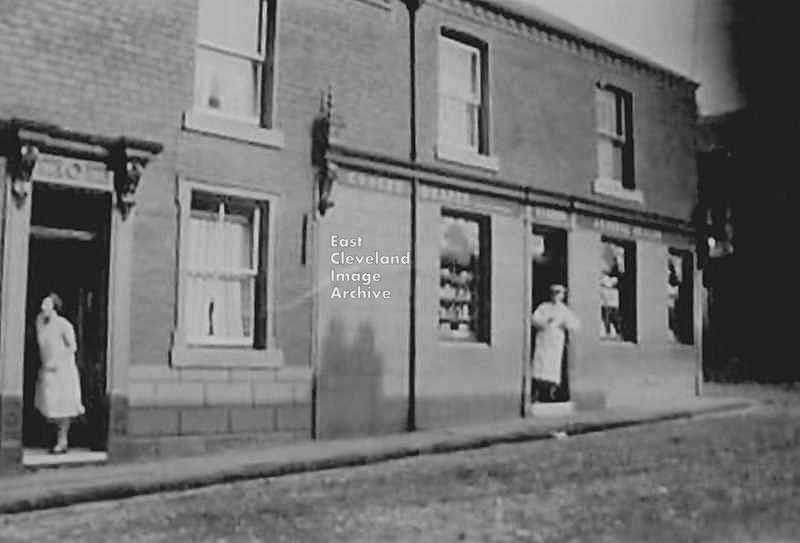 Reid’s shop, Dixon Street, Lingdale; a grocers, drapers, and general dealers with Sam Reid in the doorway. Mike Smith tells us: ”Sam Reid was the owner of the shop along with his wife Doris; I called in here on a morning on my way to school to get sweets and I also lived in this street.” Derek Dobson recalls: “I remember getting threepence for Mrs Reid’s sweets; lovely shop, lovely people.” Image courtesy of Maurice Grayson and thanks to Mike Smith and Derek Dobson for the updates.
A further image (actually duplicated elsewhere in the Archive) of the winter 1947; our information is: ” Local men cutting out road at Swales Bank , Lingdale.” 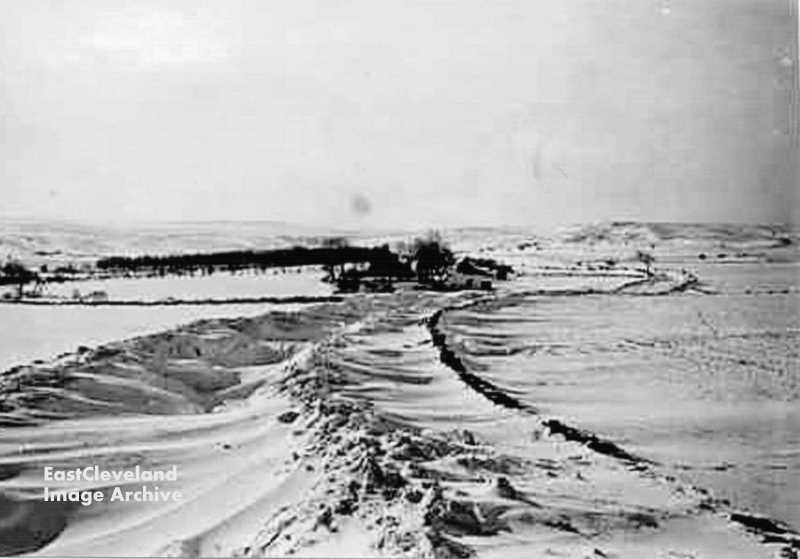 Stanghow Road, looking towards Lockwood Beck. in the winter of 1947, one of the worst of the 20th century. The tops of the hedges can be made out as a black line, marking the buried road. Image courtesy Maurice Grayson. 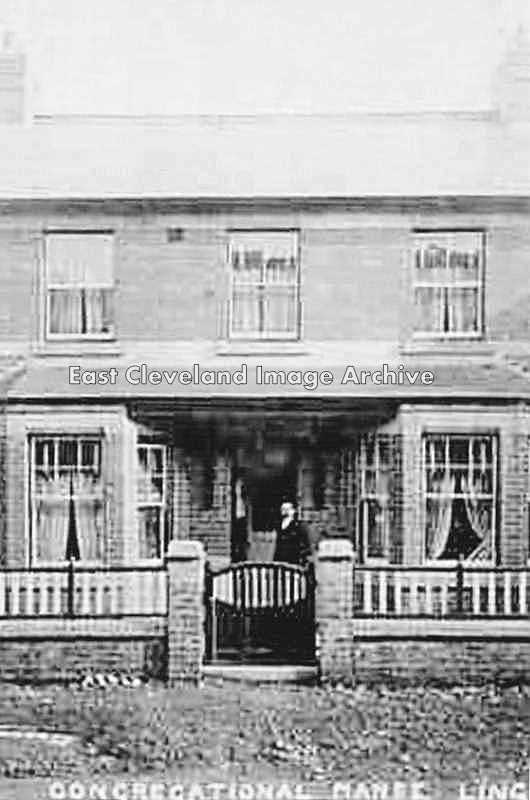 Outside the Congregational Manse Lingdale, newly built in 1907; the Reverend enjoys his new abode. Image courtesy of Maurice Grayson. 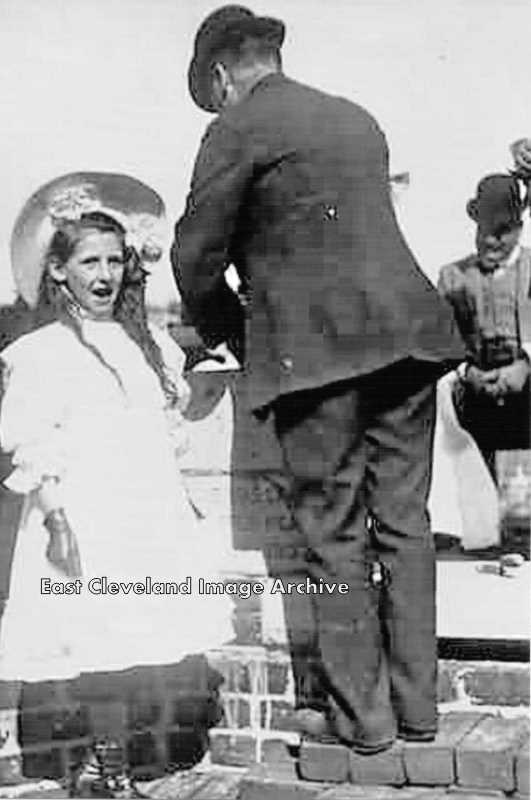 The occasion was the erection of the manse for the Congregational Minister, Reverend R. McKeith; in 1907 at Lingdale. The young lady is Eva Harrison, the gentleman is believed to be Joseph Bray, founder member of the Congregational Chapel in Lingdale. Image courtesy of Maurice Grayson. 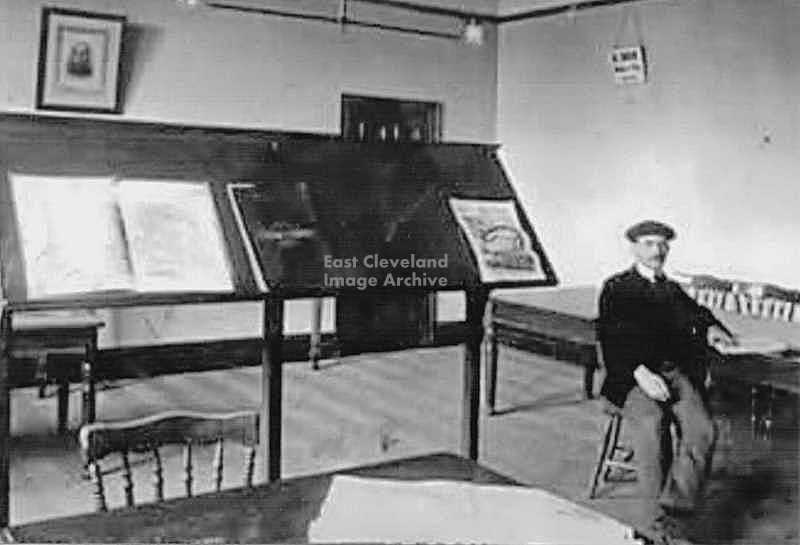 The Reading Room, Lingdale Institute; newspapers and other publications were provided for the workers many who could not afford a daily paper. The Reading Room kept them up to date with local and national news; with other books for enlightenment or knowledge. The image dates from about 1920. Image courtesy of Maurice Grayson. 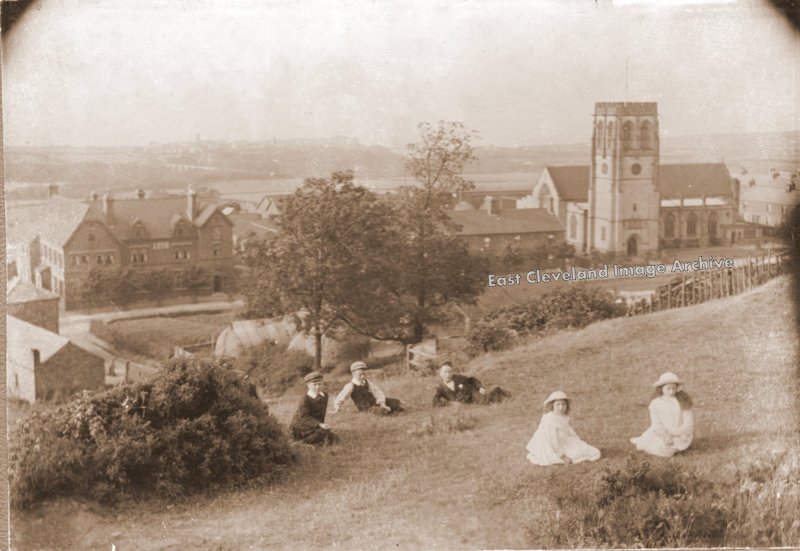 I don’t think it is actually a picnic! But still a delightful view of Skelton Church viewed from the eastern end of The Hills. The Wharton Arms (Skipper’s as it is often known) shown to the left of the clump of trees which shroud Egg Cup Farm. I wonder who the five young people are enjoying the sunshine? Graham Shaw asks: “Any idea how old this picture is?” Whilst Kirsty Dawson comments: “I’ve recently bought Egg Cup farm it was built in 1850; I love it, needs a lot of working doing to it but it will be restored and be my forever home.” Image courtesy of George Pearson, thanks to Graham Shaw and Kirsty Dawson for the updates. 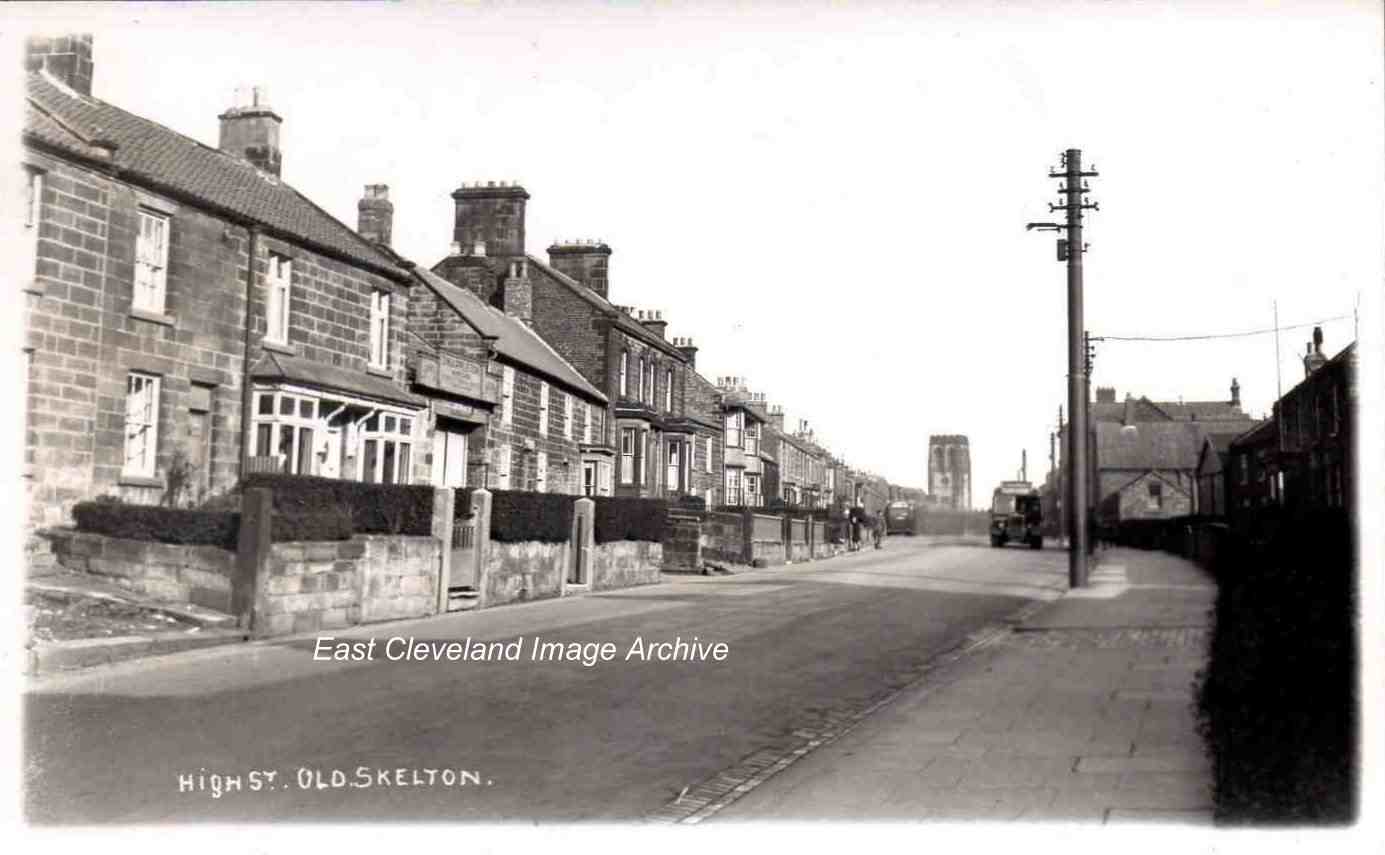 An mid 20th century view of Skelton High Street from the west, the approaching United bus could have had several destinations; Guisborough, Lingdale, Redcar or Saltburn! The services Redcar to Lingdale and Lingdale to Redcar turned beside the newsagents (Whitaker’s in the 1960s and 1970s), opposite the Institute which is visible on the right. Even in those days the centre of Skelton High Street was the focal point for all bus services. This view brings back happy memories of Skelton in the same period. Image courtesy of Peter Appleton.
This tinted postcard of views of North Skelton, dated 1910 proves how proud residents were of their communities. The view of the mine complimented by the railway station, with Bolckow Street and Vaughan Street being named after the owners of the mine. Judy Last tells us: ” The lower right picture of Vaughan Street shows my grandfather’s shop. He was Postmaster in the family’s General Stores, and later went into business with his brother-in-law calling the business Tuck & Thompson. The address was 27 Vaughan Street, and my father was born there in 1897. Not sure when they left the property but they had moved by 1911.” Image courtesy of Ken Johnson and thanks to Judy Last for that update. |
||
Recent Comments